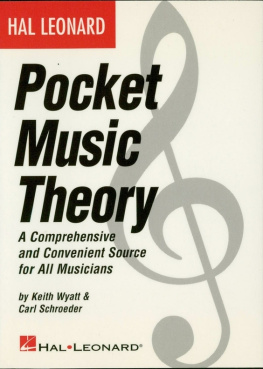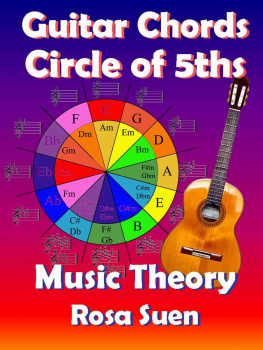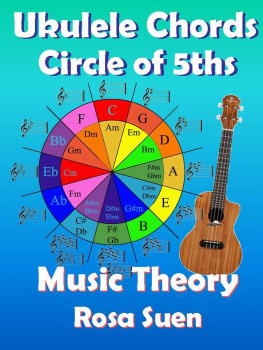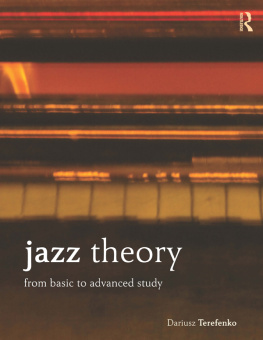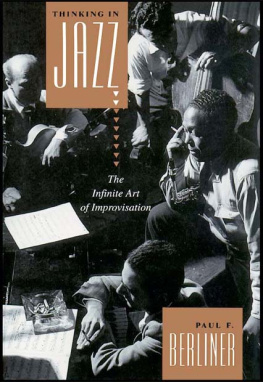Philip Jackson - The Circle of Fifths: visual tools for musicians
Here you can read online Philip Jackson - The Circle of Fifths: visual tools for musicians full text of the book (entire story) in english for free. Download pdf and epub, get meaning, cover and reviews about this ebook. year: 2019, publisher: Philip N. Jackson, genre: Children. Description of the work, (preface) as well as reviews are available. Best literature library LitArk.com created for fans of good reading and offers a wide selection of genres:
Romance novel
Science fiction
Adventure
Detective
Science
History
Home and family
Prose
Art
Politics
Computer
Non-fiction
Religion
Business
Children
Humor
Choose a favorite category and find really read worthwhile books. Enjoy immersion in the world of imagination, feel the emotions of the characters or learn something new for yourself, make an fascinating discovery.
- Book:The Circle of Fifths: visual tools for musicians
- Author:
- Publisher:Philip N. Jackson
- Genre:
- Year:2019
- Rating:4 / 5
- Favourites:Add to favourites
- Your mark:
The Circle of Fifths: visual tools for musicians: summary, description and annotation
We offer to read an annotation, description, summary or preface (depends on what the author of the book "The Circle of Fifths: visual tools for musicians" wrote himself). If you haven't found the necessary information about the book — write in the comments, we will try to find it.
The Circle of Fifths - visual tools for musicians presents a new way for all players to learn their music theory in a fresh manner, previously neglected by so many teachers. It will be of value to practical musicians at all levels and particularly useful to improvisers and jazz players at the beginning and early stages of improvisation.
Think of all those occasions when you tried to recall some aspect of musical theory on the fly to use it without interrupting your flow in composition or improvisation. You will find it so much easier when using these proven techniques.
Philip Jackson is a composer and arranger as well as a clarinet and tenor sax player. He brings his engineering background into use as he re-examines the traditional approach to some of the concepts used in music theory.
Why have so many teachers neglected the visual aspect of memory? It is too obvious just to say that music involves hearing, indeed active listening, because so many beginners have real problems to hear exactly which chord is being played. Philip believes that good teaching practice must involve as much variety as is useful and that includes not neglecting the visual part of memory.
The amazingly versatile circle of fifths is presented in this book in ways which will help you learn your music theory, to discover and recall a cadence, turnaround or other chord progression, (ii V -I, iii vi ii V I or just IV V - I) you need or that elusive diminished seventh chord.
The circle is not limited to guitar players or pianists. Any and all practising musicians players of any instrument, improvising soloists as well as composers, and arrangers - will find real benefit from using their visual memory.
This book, The Circle of Fifths visual tools for musicians, will teach you to draw the circle and with little effort you will soon learn to visualize its layout. Once this is mastered, you will learn to appreciate all its possibilities covering the entire range of music theory and this will help you to guarantee good results in, for example, chosing substitute dominants.
You will see the whole tone scales. And the relationship between quartal harmony and the pentatonic modes will be revealed to you. You will be able to visualize and select the best inside pentatonic scales appropriate to your scale or mode.
When you are playing in a group with your friends, you will be able to visualize rapidly what keys they need to play in to take into account the different transposing instruments: those in concert pitch like the guitar or trombone; in Bb like the trumpet, tenor sax and clarinet; in Eb like the alto saxophone. And if your singer needs you all to go down a tone, the circle will help you quickly select the new keys for the transposition.
More than seventy new and original drawings have been especially created for The Circle of Fifths visual tools for musicians to provide you with powerful new insights. This will make it easier for you to understand the logic behind the order of sharps and flats; the relationship between relative major and minor scales; to pick any interval you need and to be certain to achieve the results you seek.
You will no longer be left wondering from which scale a chord comes or which scale to use when you want to improvise over any given chord. Find the relative minor? Avoid the tritone? No problem!
Click the Buy Now button on this page to get started today in your new mastery of the theory.
Philip Jackson: author's other books
Who wrote The Circle of Fifths: visual tools for musicians? Find out the surname, the name of the author of the book and a list of all author's works by series.



